Query Custom Entity (Oracle NetSuite) activity
An activity that uses a WHERE clause to retrieve information from one or more custom entities in Oracle NetSuite.

Configure the Query Custom Entity activity
To configure the Query Custom Entity activity, do the procedure in this topic
Examples
Good to Know
- To send an email notification, click
Advanced
 >
Email Notifications
>
Email Notifications  .
. For more information, refer to Email Notifications screen (Process Activities).
- In most text fields, you can use process data variables as an alternative to literal data values.
- You can configure whether this activity waits for other activities before it runs.
For more information, refer to How Do I Configure an Activity to Wait for Other Incoming Activities?
- This section shows the configuration settings on the configuration screens for this activity. Other configuration settings apply to system activities. For more information, refer to:
How to Start
- Open Process Builder.
For information about how to open this screen, refer to Process Builder.
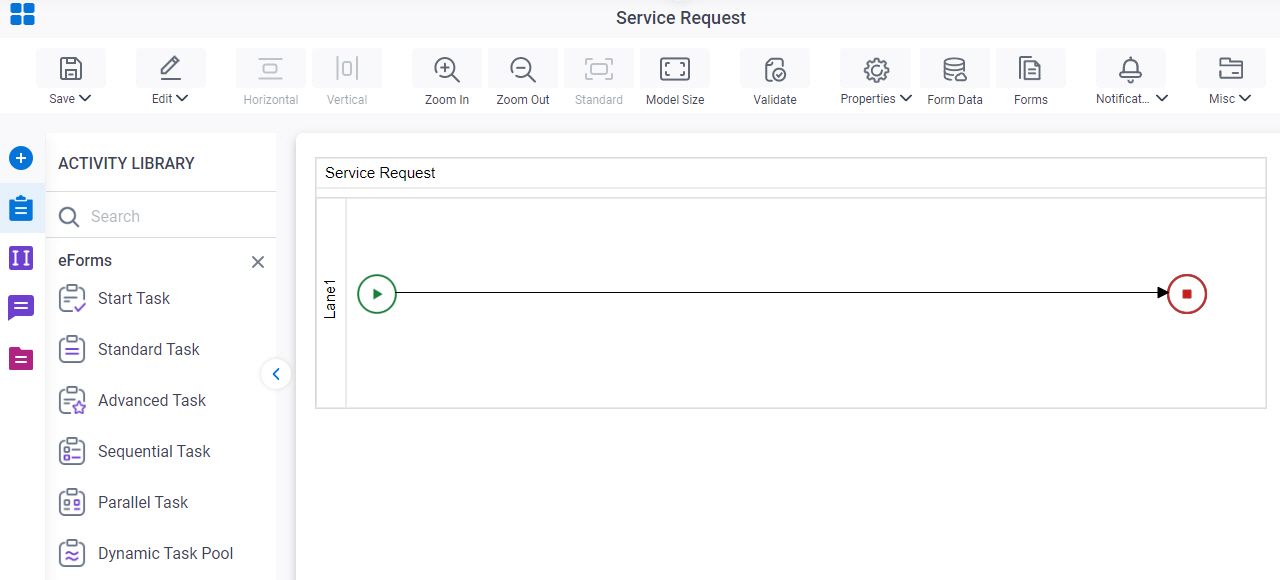
- In Process Builder, in the Activity Library,
open the Oracle NetSuite tab.
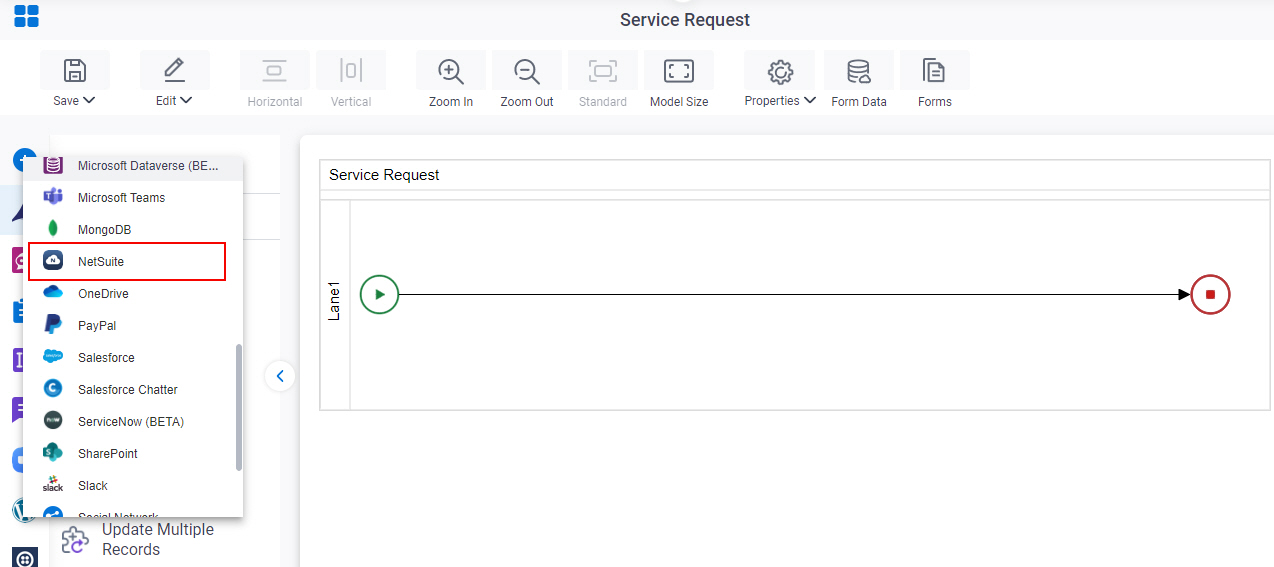
- On the Oracle NetSuite
tab,
drag the Query Custom Entity
activity onto your process.
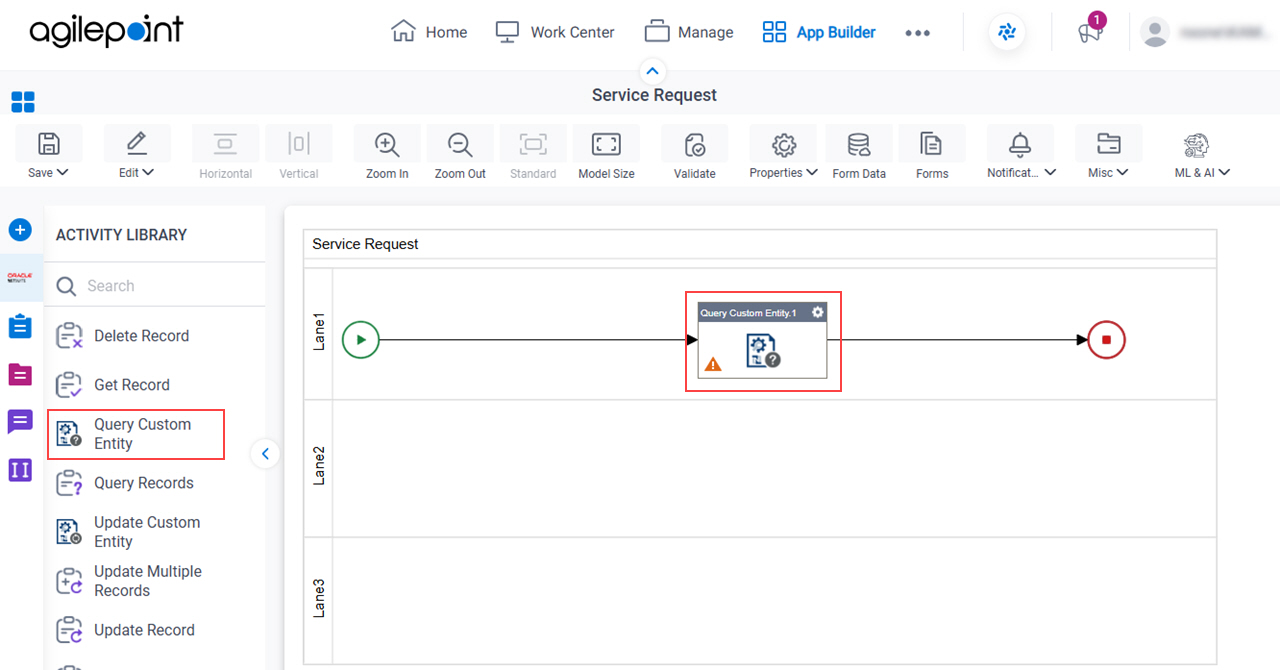
General Configuration
Specifies the basic settings for the Query Custom Entity activity.
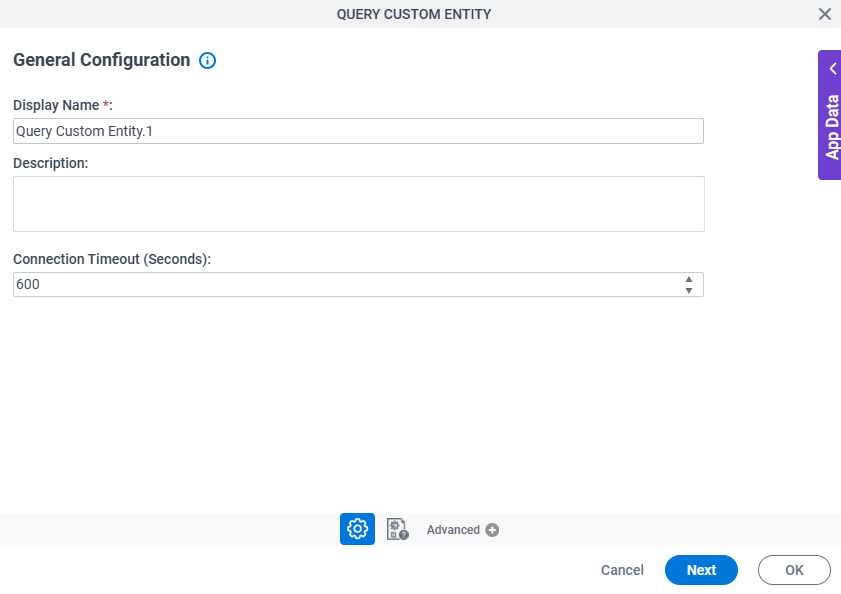
Good to Know
- Documentation for this screen is provided for completeness. The fields are mostly self-explanatory.
Fields
| Field Name | Definition |
|---|---|
|
Display Name |
|
|
Description |
|
|
Connection Timeout (Seconds) |
|
Query Custom Entity Configuration > Where tab
Configures a SQL where clause to filter the results of a query in Oracle NetSuite. It gets only the records that obey the rules in the WHERE clause.
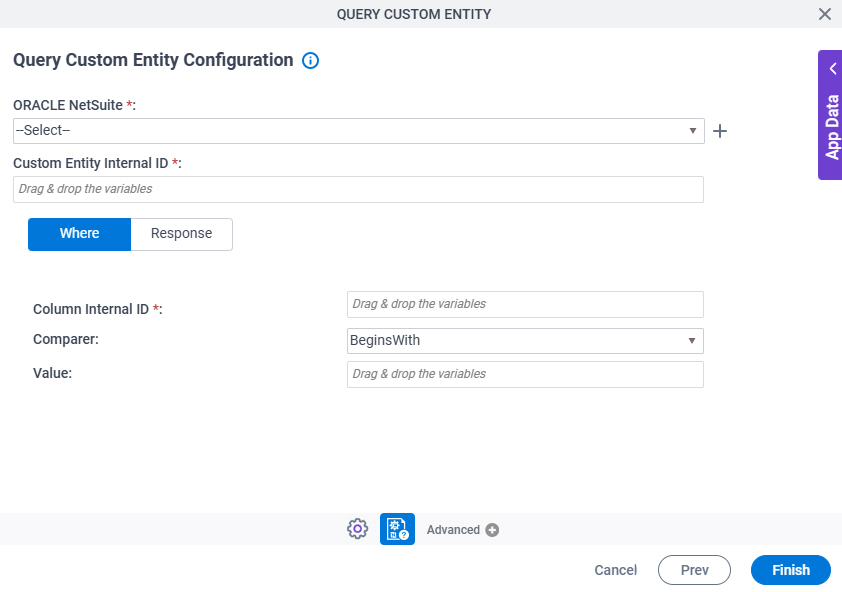
Fields
| Field Name | Definition |
|---|---|
|
Oracle NetSuite |
|
|
Create |
|
|
Custom Entity Internal ID |
|
|
Column Internal ID |
|
|
Comparer |
|
|
Value |
|
Query Custom Entity Configuration > Response tab
Retrieves the value from a custom entity in Oracle NetSuite and stores the value in a variable in the AgilePoint NX app.
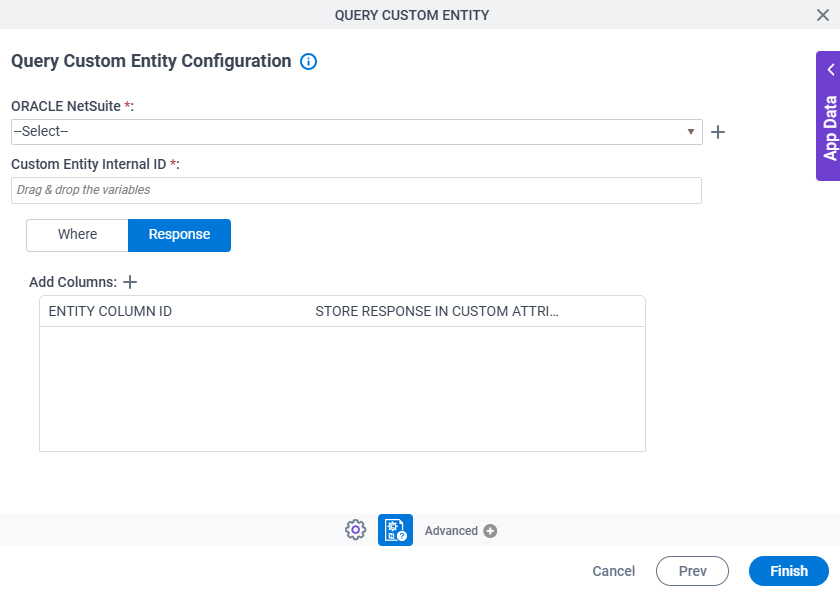
Fields
| Field Name | Definition |
|---|---|
|
Oracle NetSuite |
|
|
Create |
|
|
Custom Entity Internal ID |
|
|
Add Columns |
|
|
Entity Column ID |
|
|
Store Response In Custom Attribute |
|
Delete |
|
Add Custom Property
Adds a column for a custom entity in Oracle NetSuite.
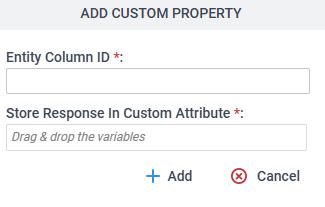
Fields
| Field Name | Definition |
|---|---|
|
Entity Column ID |
|
|
Store Response In Custom Attribute |
|
|
Add |
|
Cancel |
|



